Key takeaways
- New Orleans is working on improving public transportation through initiatives like expanding bus routes to underserved neighborhoods and introducing eco-friendly buses.
- Public transportation enhances community connections, reduces traffic congestion, and has a positive economic impact by increasing foot traffic to local businesses.
- Recent policy changes include dedicated bus lanes and increased funding, aimed at enhancing service reliability and accessibility.
- Community feedback is mixed, with residents appreciating improvements but also voicing concerns about safety and service quality.
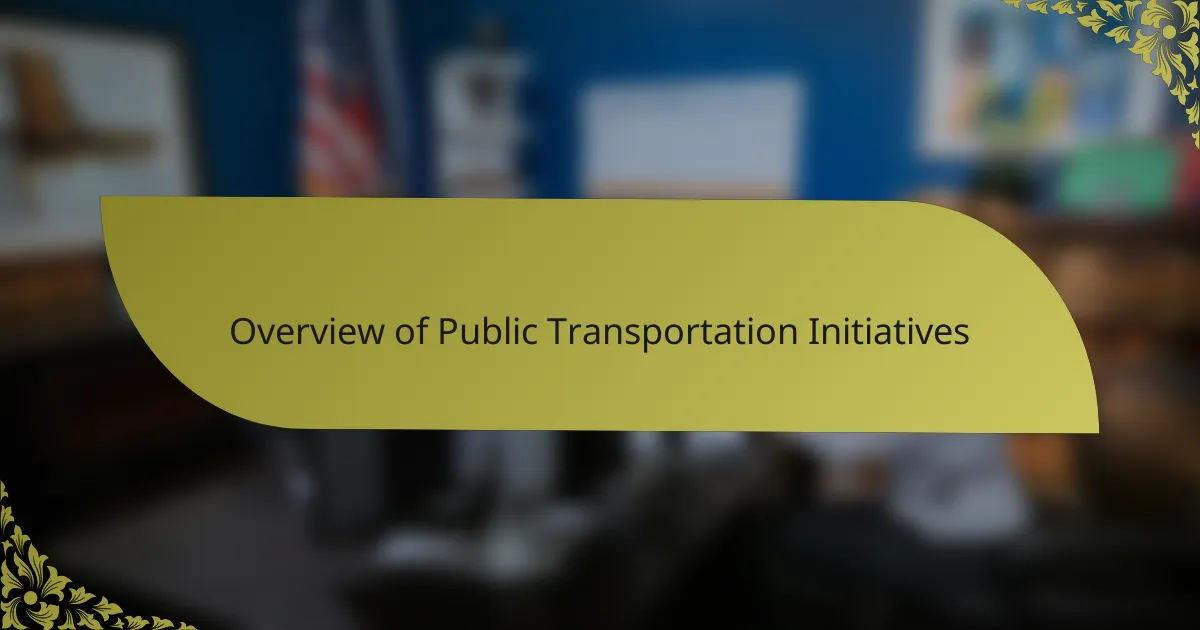
Overview of Public Transportation Initiatives
New Orleans has been actively exploring various public transportation initiatives aimed at improving accessibility and efficiency. I remember the excitement from residents when Mayor LaToya Cantrell introduced plans for modernizing streetcars and increasing bus frequency. It felt like a step towards a vibrant city where mobility issues were being addressed directly.
One key initiative is the expansion of the bus network to underserved neighborhoods. I often hear from friends who live in areas that previously lacked reliable public transport. They express a mix of hope and skepticism; will these changes genuinely make their commutes easier? The goal is to create a seamless experience for all residents and visitors, ultimately strengthening the community.
Another notable effort is the city’s focus on sustainability by incorporating eco-friendly buses. I can’t help but feel optimistic about the potential for cleaner air and reduced traffic congestion. Isn’t it fulfilling to know that our transportation choices can positively impact the environment and our daily lives?
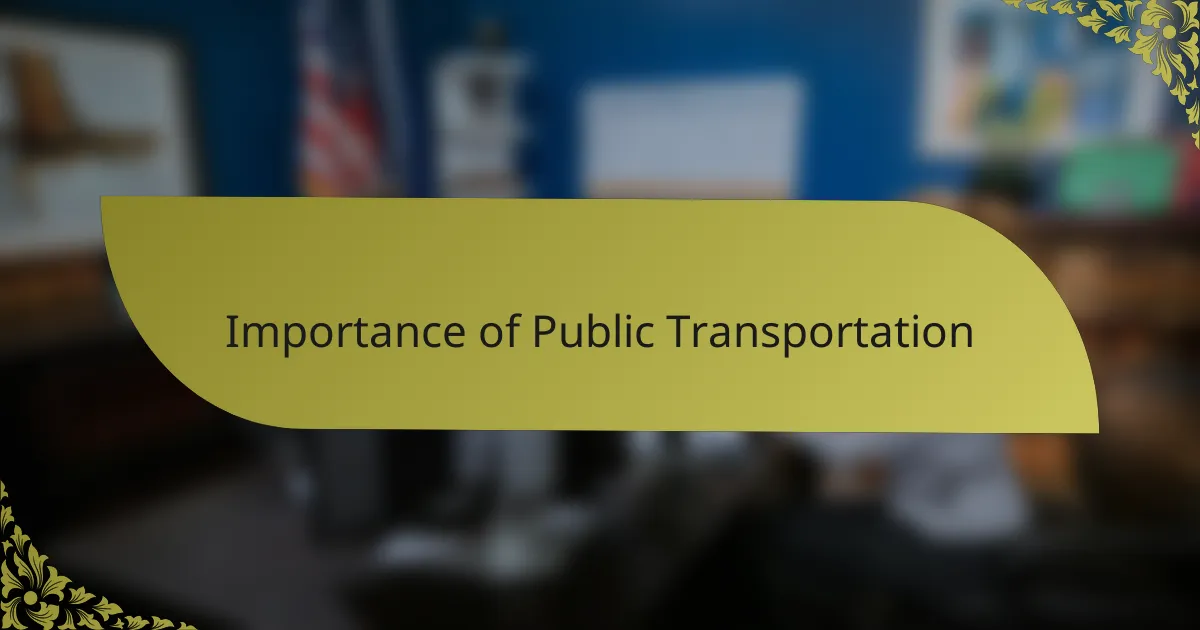
Importance of Public Transportation
Public transportation plays a crucial role in the everyday lives of New Orleans residents. It helps reduce traffic congestion, thus making commutes more manageable and enhancing air quality. In my experiences navigating the city, I’ve seen how a reliable transit system can connect communities and provide opportunities for those who may not have access to private vehicles.
One of the most striking aspects of public transportation is its ability to foster social interactions. For instance, I’ve shared conversations with fellow passengers that opened my eyes to different perspectives and life experiences. This sense of community is invaluable and adds vibrancy to the city’s culture.
Equally important is the economic impact of public transit initiatives. By increasing accessibility, we can draw more visitors to local businesses, which was evident during the recent expansion of certain bus routes in the French Quarter. When people can easily travel to different parts of the city, it benefits everyone.
| Factor | Impact of Public Transportation |
|---|---|
| Environmental | Reduces carbon emissions, improving air quality. |
| Social | Enhances community connections and inclusivity. |
| Economic | Boosts local businesses through increased foot traffic. |
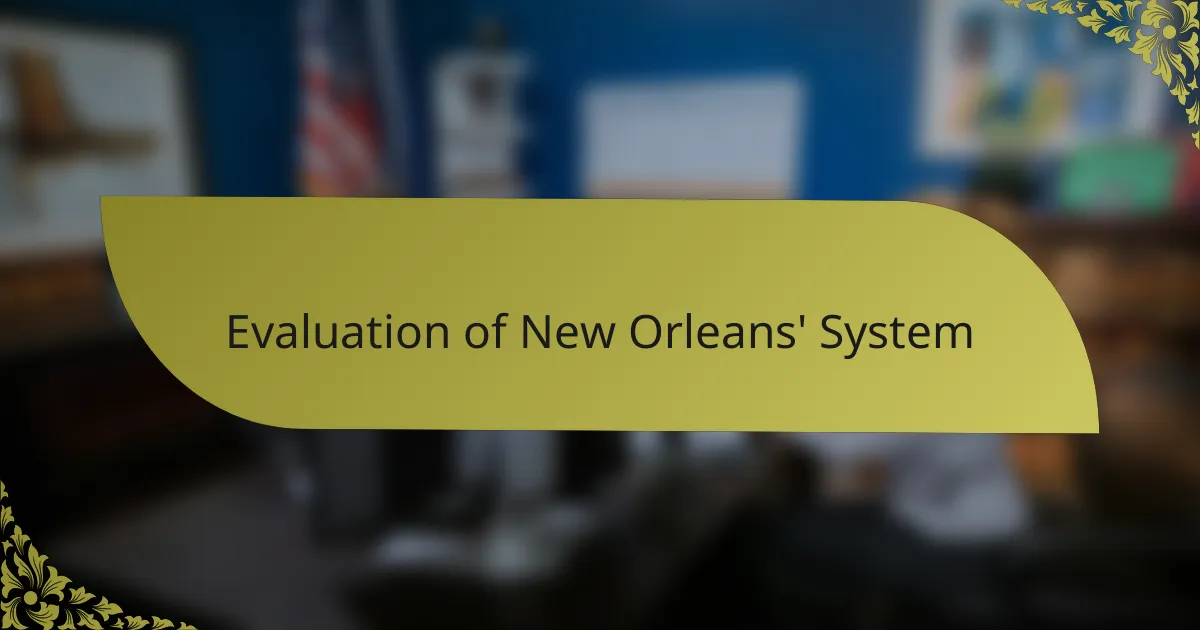
Evaluation of New Orleans’ System
When evaluating New Orleans’ public transportation system, it’s hard not to notice the vibrant energy it brings to the city. However, I find that the system often struggles with reliability and efficiency, which can be frustrating for daily commuters. My experiences riding the streetcar through the picturesque neighborhoods have been memorable, yet many times, I’ve faced delays that impacted my plans.
Comparatively, I see some parallels and stark differences when I compare New Orleans to other cities. While cities like San Francisco have invested heavily in solid infrastructure, I feel that New Orleans is still playing catch-up, even with its unique charm. Here’s a quick look at how the New Orleans public transportation initiatives stack up against others:
| Criteria | New Orleans | San Francisco |
|---|---|---|
| Reliability | Moderate | High |
| Accessibility | Improving | Excellent |
| Coverage | Limited | Extensive |
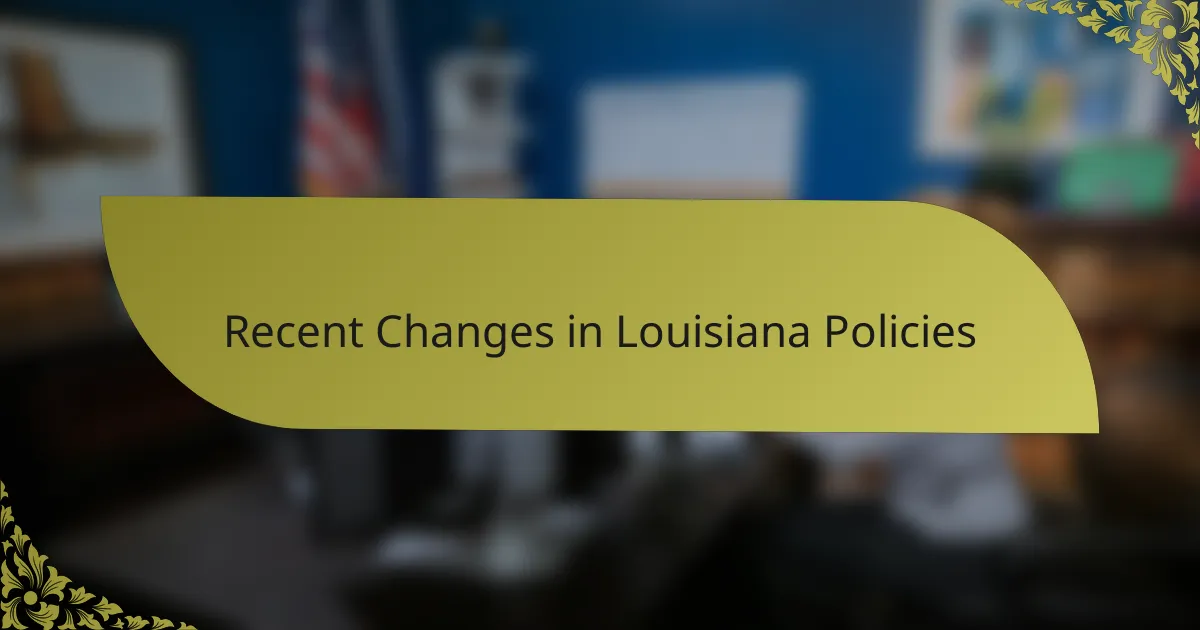
Recent Changes in Louisiana Policies
Recent changes in Louisiana policies have significantly impacted public transportation in New Orleans. I’ve seen firsthand how the city has embraced new initiatives aimed at improving accessibility and efficiency. For instance, the expansion of bus services into underserved neighborhoods was a much-needed step that I’ve observed leading to more commuters using public transport regularly.
One of the more notable changes is the introduction of dedicated bus lanes, which I personally find to be a game changer during peak hours. Reflecting on my experiences navigating the city’s streets, it’s easy to remember the frustrations of traffic. The hope is that these policies will not only enhance rider experience but also encourage a shift towards more sustainable modes of transport.
- Expansion of bus routes to underserved areas
- Introduction of dedicated bus lanes
- Increased funding for public transit initiatives
- Implementation of real-time tracking for buses
- Focus on sustainability and environmental impact
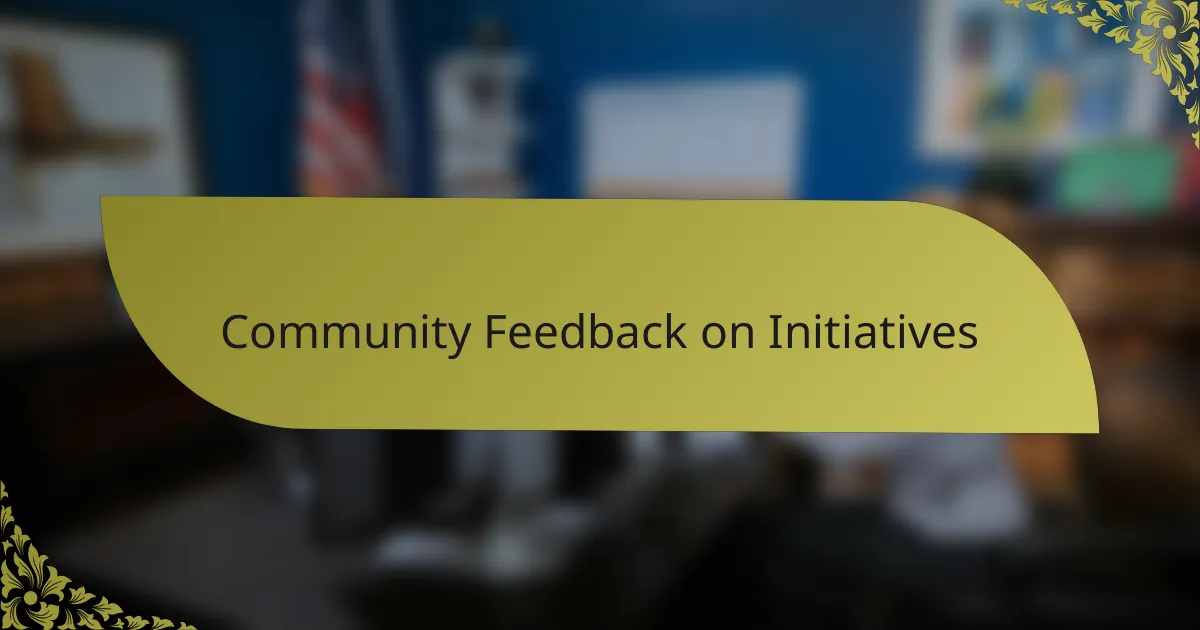
Community Feedback on Initiatives
Community feedback on public transportation initiatives in New Orleans has been a mixed bag. While some residents appreciate efforts to improve access and reliability, others voice concerns about the quality and safety of the service. For instance, I remember a friend sharing her experience of waiting for a bus late at night and feeling uneasy, highlighting a real concern for many in the community.
On the positive side, many residents commend the recent expansions in service routes and hours, which allow for greater connectivity across the city.
- Increased bus frequency and reliability have made it easier for many to commute.
- Initiatives like community meetings provide a platform for residents to express their concerns and suggestions.
- Some locals have reported feeling more included in city planning discussions, fostering a sense of community ownership.
- There is a growing sense of optimism as public transport improvements have started to enhance neighborhood accessibility, particularly for low-income areas.
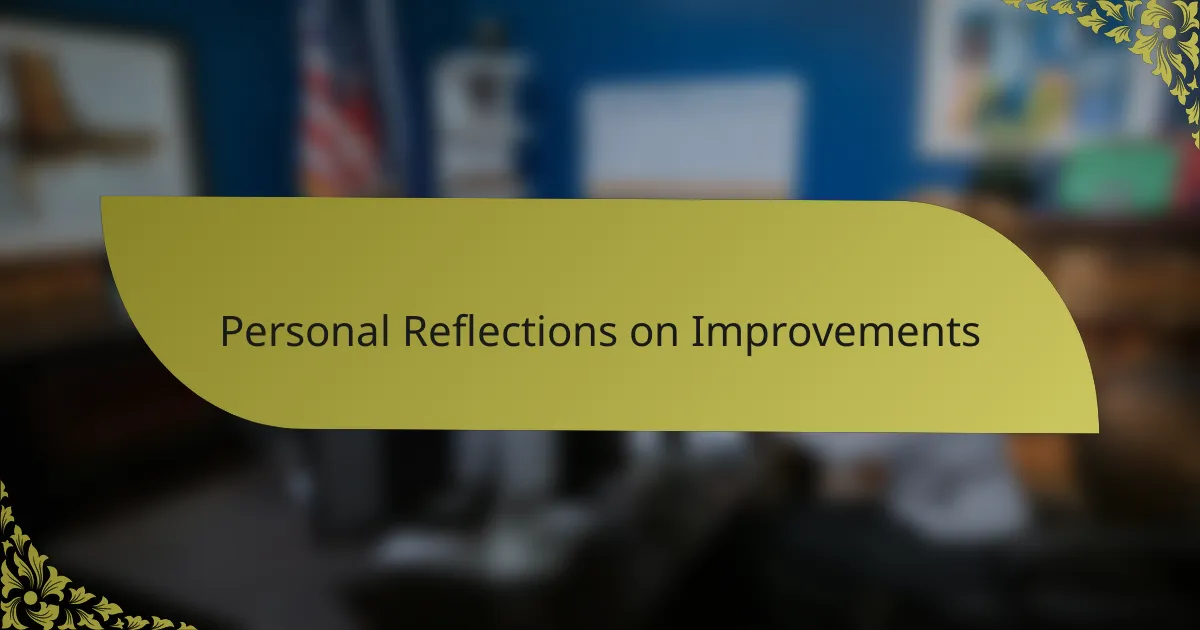
Personal Reflections on Improvements
I’ve noticed some positive shifts in New Orleans’ public transportation landscape, particularly with the recent initiatives aimed at improving accessibility and efficiency. For instance, the introduction of electric buses is a game changer, not just for reducing emissions but also for enhancing the overall riding experience. I remember the days when a crowded, slow bus ride was the norm, and it’s refreshing to see steps being taken toward a more reliable service.
Another aspect that resonates with me is the community involvement in these initiatives. I’ve attended a few public meetings where locals voiced their opinions, which felt empowering. These efforts to include community feedback seem to genuinely reflect our needs and concerns, making public transportation feel more like a shared resource than a mundane necessity.
Here’s a simple comparison of the key improvements being implemented:
| Initiative | Description |
|---|---|
| Electric Buses | Reduced emissions and enhanced rider comfort. |
| Community Engagement | Local feedback incorporated into planning and improvements. |